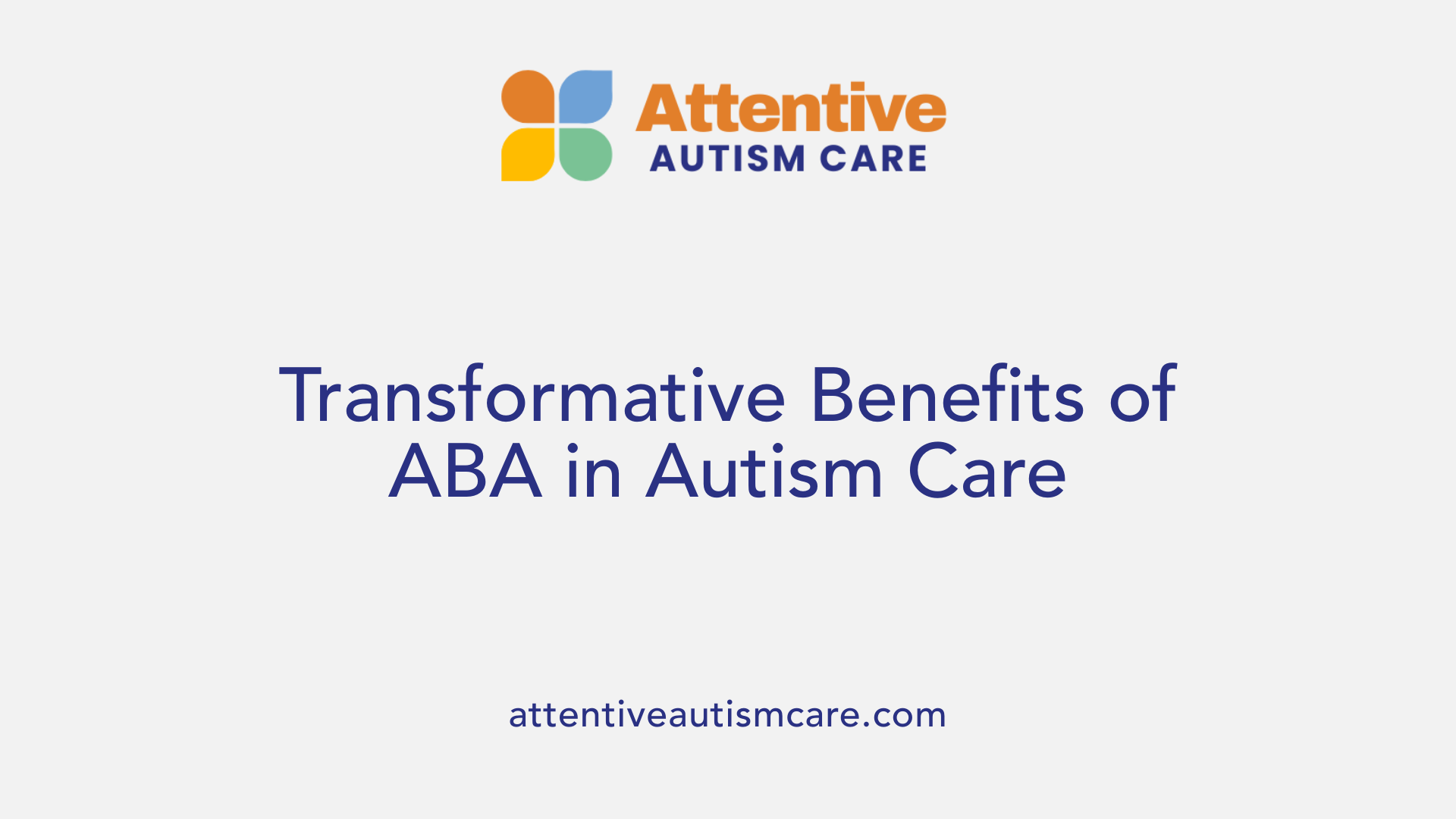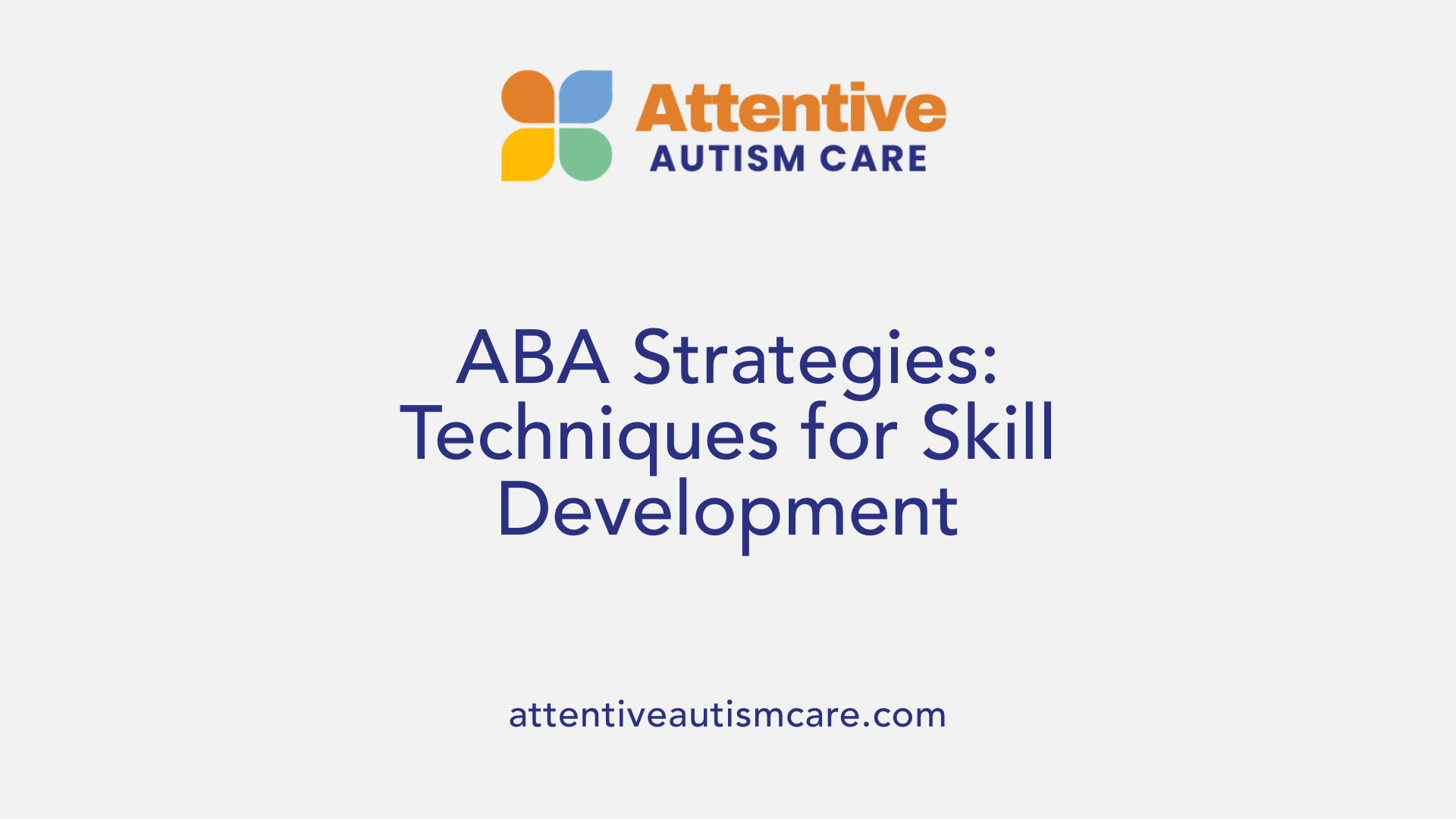The Role of Parent Support Networks in Autism Care
Empowering Families: How Parent Networks Enhance Autism Care Outcomes

Understanding the Crucial Role of Parents in Autism Support
Autism Spectrum Disorder (ASD) presents complex challenges that extend beyond the individual child to their entire family. Parent support networks have emerged as essential pillars in autism care, providing emotional, educational, and practical assistance that fosters better developmental outcomes. This article delves into the multifaceted role that these networks play, including how parents engage with evidence-based therapies like Applied Behavior Analysis (ABA), collaborate with healthcare providers, and navigate systemic resources to empower their children and themselves.
What is Applied Behavior Analysis (ABA) Therapy and Its Role in Autism Care?

What is applied behavior analysis (ABA) therapy?
Applied Behavior Analysis (ABA) therapy is a scientifically-based approach that focuses on understanding and modifying behavior by applying principles of learning. The core idea is to increase positive behaviors such as communication, social interaction, and functional skills, while reducing behaviors that may interfere with learning or safety. ABA uses positive reinforcement, prompting, and careful observation to shape new skills.
How does ABA therapy work and what are its goals in autism care?
ABA involves detailed assessments to identify an individual's unique strengths and challenges. Therapists set personalized goals aimed at improving communication, social skills, and daily living abilities. This therapy also targets reducing challenging behaviors that can hinder progress. The ultimate aim is to support individuals with autism to gain independence and successfully engage in their communities.
What evidence supports ABA therapy?
ABA is one of the most evidence-based interventions for autism. Research shows that early and intensive ABA can significantly improve language, social skills, and adaptive behaviors. The therapy's effectiveness is stronger when parents are actively involved, ensuring consistency between therapy sessions and everyday life.
In what settings and by whom is ABA delivered?
ABA therapy is versatile and can be provided in homes, schools, clinics, and community settings. It is delivered by trained and certified professionals such as Board Certified Behavior Analysts (BCBAs) who develop and oversee individualized treatment plans. These experts may also provide parent coaching to help families reinforce skills and maintain progress across environments.
| Aspect | Description | Additional Details |
|---|---|---|
| Definition | Science-based behavior modification therapy | Focuses on increasing positive and decreasing interfering behaviors |
| Goals | Improve communication, social, and functional skills; reduce interfering behaviors | Personalized to each child's needs |
| Evidence | Strong, especially for early and intensive intervention | Supported by extensive research |
| Settings | Home, school, clinics, community | Flexible delivery models |
| Providers | Certified professionals like BCBAs | Include parent coaching for consistency |
How ABA Therapy Benefits Individuals with Autism

How does ABA therapy help individuals with autism?
Applied Behavior Analysis (ABA) therapy is a structured and evidence-based approach designed to support individuals with autism by teaching new functional skills and reducing behaviors that interfere with learning or daily life. ABA systematically analyzes behavior patterns to identify what triggers and maintains behaviors, then applies techniques like positive reinforcement to encourage desirable actions.
Functional skill development
ABA therapy targets a wide range of skills essential for independence, including communication, social interaction, self-care, and academic tasks. By breaking down complex skills into smaller, teachable steps and reinforcing progress, ABA helps children improve their abilities in meaningful, everyday contexts.
Behavior reduction
A key component of ABA is to reduce challenging behaviors that may hinder learning or safety. Through careful observation and intervention, therapy focuses on understanding triggers and teaching alternative, more appropriate behaviors, thereby enhancing the child’s ability to participate in social and educational environments.
Personalized interventions
ABA programs are tailored to each child’s unique strengths, needs, and learning styles. This personalized approach ensures that interventions are relevant and effective, promoting consistent progress. Parent involvement is emphasized, enabling techniques learned during therapy to be reinforced across different settings.
Impact of early intensive ABA
Research shows that early and intensive ABA intervention results in significant developmental gains. Children receiving these supports often achieve improved communication, social skills, and independence, allowing for greater community participation and enhanced quality of life.
| Aspect | Description | Benefit |
|---|---|---|
| Functional skill development | Breaks down skills into teachable steps using reinforcement | Increases independence and everyday functioning |
| Behavior reduction | Identifies triggers and teaches alternative behaviors | Enhances safety and learning potential |
| Personalized interventions | Customized to individual needs and learning style | Maximizes effectiveness and consistency across settings |
| Early intensive intervention | Intensive therapy started early in life | Leads to substantial developmental improvements |
Who Provides ABA Therapy and What Qualifications Are Required?
Specialist Roles Providing ABA Therapy
Applied Behavior Analysis (ABA) therapy is generally delivered by specialized professionals trained in behavioral interventions for autism. The main providers include Board Certified Behavior Analysts (BCBAs) and trained therapists who work in clinics, educational settings, or private companies focused on autism care. For children with Medi-Cal coverage, these services may be accessed through managed care plans or Regional Centers, with a growing number of providers joining under Medi-Cal Qualified Autism Service (QAS) programs. Medical necessity for ABA therapy must be formally determined by a qualified physician or psychologist to initiate treatment.
Certification and Licensure
ABA therapists usually hold certification from the Behavior Analysis Certification Board (BACB). The two primary credentials are:
- Board Certified Behavior Analyst (BCBA): The highest level for independent practitioners.
- Board Certified Assistant Behavior Analyst (BCaBA): A support-level credential working under the supervision of a BCBA.
Most U.S. states require licensure to practice, which involves passing the BCBA exam and complying with continuing education standards to maintain the credential. Licensure ensures adherence to professional and ethical standards in ABA therapy.
Educational and Practical Training
ABA providers generally start with at least a bachelor's degree in psychology, education, or a related field, often followed by a master's degree specializing in applied behavior analysis or a closely aligned area. Training includes extensive coursework in behavior assessment and intervention techniques, ethical practices, and supervision by experienced professionals. Additionally, they complete 1,500 to 2,000 hours of supervised fieldwork to develop practical skills. Strong observational and communication abilities, along with empathy and flexibility, are vital for successful therapy delivery.
Importance of Provider Competence
Competent providers are essential to maximize the effectiveness of ABA interventions. Their expertise ensures that therapy is customized to each child’s learning style and needs, while actively involving parents for consistency across environments. Skilled professionals contribute significantly to progress in communication, social interaction, and behavior management for individuals with autism.
| Aspect | Details | Importance |
|---|---|---|
| Providers | BCBAs, BCaBAs, trained ABA therapists | Ensure evidence-based, high-quality care |
| Certification | BACB credentials required | Validates knowledge and professionalism |
| Education & Training | Bachelor's, often Master's, supervised fieldwork (1,500–2,000 hours) | Provides practical and theoretical foundation |
| Licensure | Required in many states, exam and ongoing education | Ensures regulatory compliance |
| Professional Skills | Observation, communication, empathy, adaptability | Critical for individualized, family-involved therapy |
Techniques and Strategies Employed in ABA Therapy

What are common techniques used in ABA therapy?
ABA therapy utilizes several well-established techniques designed to teach and reinforce skills in children with autism.
One common method is Discrete Trial Training (DTT). This approach breaks down complex skills into smaller, manageable steps that are taught systematically. Each “trial” includes a clear instruction, a child’s response, and immediate feedback or reinforcement. This structured teaching helps children learn specific behaviors through repetition and reward.
Natural Environment Training (NET) complements DTT by promoting learning in everyday settings. Instead of highly controlled trials, NET capitalizes on natural opportunities—like playing or routine activities—to teach skills, reinforcing them in real-world contexts.
Shaping and prompting are techniques used to guide behavior toward desired outcomes gradually. Shaping involves rewarding incremental approximations to the target behavior, gently molding a child’s actions. Prompting provides cues or assistance to help the child respond correctly; these prompts are faded over time to encourage independence.
A crucial foundation in ABA is the Reinforcement Framework. Positive reinforcement—through tokens, praise, or tangible rewards—is vital to encourage and maintain beneficial behaviors. Therapists analyze behavior using the ABC model (Antecedent, Behavior, Consequence), which helps detect what triggers a behavior and what outcomes maintain it, enabling more effective intervention.
Additional strategies include modeling appropriate behaviors and using communication aids like the Picture Exchange Communication System (PECS) to develop language and social skills adapted to the child’s unique needs.
Together, these techniques provide a comprehensive, individualized framework for skill development and behavior management in ABA therapy.
The Central Role of Parent Involvement in ABA Therapy
How does parental training and coaching enhance ABA therapy?
Applied Behavior Analysis (ABA) therapy is a widely accepted, evidence-based intervention that focuses on improving communication, social, and functional skills in children with Autism Spectrum Disorder (ASD). Parental training and coaching are integral to this approach. Through specialized training, parents learn methods to reinforce positive behaviors and extend therapeutic learning beyond the clinical setting. This empowers them with techniques to support their child's development consistently at home and in everyday environments.
Why is consistency across environments important?
Children with autism benefit greatly from consistency in how they are supported and taught. ABA parent coaching helps maintain this consistency across different environments and caregivers. By keeping the approach uniform, children are more likely to generalize skills learned during therapy sessions into real-world situations, which accelerates their progress.
In what ways do parents expand their role within therapy?
Parents’ involvement extends beyond being passive recipients of information. In ABA therapy, parents act as logistical coordinators, co-facilitators, coaches, cheerleaders, companions, and teammates. This expanded role ensures continuous support for the child and strengthens the therapy's effectiveness. Parents not only reinforce the therapy but also help adapt interventions to the unique needs of their child.
How does parent involvement impact the child's progress?
Active parental engagement in ABA therapy significantly contributes to improved outcomes in children with ASD. When parents consistently apply therapeutic techniques, children show better skill acquisition and more rapid reductions in interfering behaviors. Parent involvement fosters independence, enhances social and communication skills, and supports long-term progress, making it a core component of successful intervention.
These factors collectively underscore why parent involvement is considered essential and why specialized providers emphasize parent coaching as part of ABA therapy for autism.
Integrating Parents in Cognitive-Behavioral Therapy (CBT) for Autism
How does CBT help children with autism experiencing mental health challenges?
Cognitive-behavioral therapy (CBT) is an evidence-based approach that has proven effective for autistic children dealing with mental health issues, such as anxiety. It targets the cognitive patterns and behaviors that impact emotional well-being, helping children develop healthier coping mechanisms and improved emotional regulation.
What roles do parents play in their child's CBT sessions?
Parents often take on multiple supportive roles during their child's CBT journey. These include acting as logistical coordinators, co-facilitators during sessions, coaches who reinforce strategies at home, cheerleaders offering encouragement, companions providing emotional support, and complementary helpers who align therapy goals with daily life. Their involvement ranges from attending separate sessions to participating alongside their child.
How does parental involvement improve children's emotional regulation?
Active parent engagement, including scaffolding through motivational and emotional support, is linked to better emotional regulation in children. Such involvement helps children generalize coping skills beyond therapy. Empirical evidence suggests that when parents are involved in CBT, children exhibit greater reductions in anxiety symptoms and enhanced therapeutic outcomes.
What factors influence the effectiveness of parent involvement in CBT?
Several factors shape successful parental participation, including the parents' responsiveness, flexibility, motivation, and positive attitudes towards therapy. Therapist qualities, such as empathy, warmth, competence, and adaptability, also facilitate effective collaboration. Tailoring parent involvement based on individual child needs, parent characteristics, and environmental context ensures more personalized and impactful support.
Parent Support Networks: Education, Advocacy, and Shared Experiences

What are Parent Training Programs and Why Are They Important?
Parent training programs are designed to empower families of children with Autism Spectrum Disorder (ASD) by enhancing their understanding of autism and teaching effective strategies to support their child’s development. These programs often include coaching in therapies like Applied Behavior Analysis (ABA), where parents learn to reinforce positive behaviors consistently across environments, promoting skill generalization. This training also equips parents to support communication, social skills, and independence at home, contributing to better long-term outcomes.
How Do Sibling Support Groups Help Families?
Sibling support groups offer a valuable space for brothers and sisters of children with autism to share experiences, express feelings, and access emotional support. Recognizing siblings’ unique roles and challenges within the family structure helps reduce stress and foster resilience. These groups can deepen family understanding and improve the overall family dynamic by promoting mutual support and communication.
What Role Does Advocacy with Schools and Healthcare Teams Play?
Advocacy is crucial in developing personalized education and therapy plans tailored to the child's needs. Parents are encouraged to actively engage with schools and healthcare providers to ensure interventions align with evidence-based practices. Collaborating in this way supports creation of Individualized Education Programs (IEPs) and therapy plans that boost communication, social skills, and adaptive behaviors. Advocates also help families navigate complex systems, ensuring services are accessible and appropriate.
How Can Families Access Community Resources Effectively?
Families are advised to connect with local health and educational services such as Medicaid and private insurance, as well as state programs like Early On® Michigan (for ages birth to 3) and Build Up Michigan (ages 3-5) for early intervention. External organizations including the Autism Alliance of Michigan and Autism Speaks provide additional family support and information. Utilizing these resources helps families secure therapies like ABA, speech, occupational, and counseling services, as well as participate in parent training and safety planning.
Together, parent training, sibling support, effective advocacy, and access to community resources form a robust support network that significantly benefits children with autism and their families.
Family-Centered Care: Collaboration and Empowerment

Principles of family-centered care
Family-centered care in autism support is built on core principles that prioritize collaboration and respect between families and professionals. It empowers families to be active participants in planning, implementing, and evaluating care for their child with Autism Spectrum Disorder (ASD). This approach ensures that interventions are aligned with families' values, goals, and cultural contexts, supporting a holistic view of the child's and family's needs.
Two-way communication
Effective family-centered care emphasizes two-way communication, creating open channels for families and providers to exchange information, feedback, and concerns. This ongoing dialogue fosters trust and helps tailor services dynamically to the child’s progress and family circumstances. Communication is respectful and responsive, acknowledging the unique expertise families hold regarding their child.
Individualized support plans
Families and multidisciplinary teams collaborate to develop individualized support plans that address the child’s unique strengths and challenges. These plans incorporate evidence-based practices such as Applied Behavior Analysis (ABA), speech therapy, and occupational therapy, adapted to the family's context. Flexibility in service delivery, including options like teletherapy and home-based interventions, ensures accessibility and responsiveness.
Reducing family stress
Family-centered care actively works to reduce family stress by providing both emotional and practical support. Engaging families in services leads to greater satisfaction and trust, helping to alleviate anxiety related to managing care. Family involvement in interventions has been shown to improve development outcomes for children while simultaneously enhancing family well-being. Support networks, including parent training and sibling groups, complement these efforts by building community and resilience.
Together, these elements promote continuous collaboration and empowerment, fostering a supportive environment where children with autism and their families can thrive.
Navigating Systemic Resources for Autism Support
Early Intervention and Educational Programs
Early intervention plays a crucial role in supporting children diagnosed with Autism Spectrum Disorder (ASD), especially during the critical development period from birth to age five. Programs like Early On® Michigan serve children from birth to age 3, while Build Up Michigan supports ages 3-5, promoting development across communication, cognitive, adaptive, motor, and socioemotional domains. For school-age children (up to age 22), school-based interventions aligned with IDEA regulations provide educational supports tailored to individual needs, helping children reach their full potential.
Medicaid and Insurance Navigation
Families seeking autism services are encouraged to connect with local Medicaid offices and private insurance providers. These entities can help cover evidence-based therapies such as Applied Behavior Analysis (ABA), speech therapy, occupational therapy, and physical therapy. Navigating insurance options ensures families access critical treatments like ABA parent coaching, which bolsters consistency across environments by training parents to reinforce positive behaviors and foster generalization beyond therapy sessions.
Community Organizations and Online Supports
In addition to governmental programs, numerous community organizations provide valuable resources. The Autism Alliance of Michigan and Autism Speaks offer family support networks, advocacy, and parent training. Online repositories like the CDC and the National Professional Development Center on Autism Spectrum Disorder provide trustworthy information about evidence-based practices. Michigan Alliance for Families connects parents to specialized education resources, while parent training and sibling support groups help families develop strong support systems.
Transition Planning Through Lifespan
Supporting individuals with autism involves preparing for significant life transitions such as starting school, entering the workforce, or accessing adult services. Family-centered care emphasizes collaboration and respect by involving families actively in planning and evaluating these transitions. Effective transition planning includes multidisciplinary team collaboration, flexible service delivery modes such as teletherapy, and personalized goal setting. These efforts contribute to smoother transitions, continuity of care, and increased life stability for individuals with ASD.
Challenges and Opportunities in Parent Support Networks Globally
Variations in service satisfaction
Parents of children with Autism Spectrum Disorder (ASD) report varying levels of satisfaction with available services worldwide. For instance, in Saudi Arabia, diagnostic and evaluation services receive relatively satisfactory ratings, yet support and intervention services—including family training, counseling, and vocational assistance—are largely viewed as inadequate. Similarly, programs intended to promote social integration, independent living, and ongoing education are often rated unsatisfactory by families. This indicates a widespread gap in access and quality of essential autism-related supports at different stages of child development.
Importance of integrating support programs
To address these gaps, integrating comprehensive support programs is critical. Such programs should encompass parent training to understand autism characteristics, counseling to manage family stress, and sibling support groups to strengthen family networks. Evidence from early intervention initiatives highlights significant progress when parents are actively involved and trained in evidence-based therapies like Applied Behavior Analysis (ABA). A holistic approach centered on family needs enhances developmental outcomes for children and reduces caregiver burden.
Recommendations for service improvement
Experts advocate for multi-disciplinary training of professionals to raise the quality of service delivery. Establishing accessible online platforms for parent support and education can empower families with information and emotional assistance. Increased funding is also essential to expand service availability, including teletherapy and home-based interventions. Implementing a national quality monitoring system can help ensure standards are consistently met and adapt services based on family feedback to better meet their needs.
Models influencing service delivery
Various theoretical frameworks guide the design and evaluation of autism support services globally. The Social-Ecological Model accounts for multiple environmental layers affecting families. The Stress-Coping Model and Family Systems Theory emphasize the dynamic interactions and stresses within families that influence care and support. Additionally, the Quality of Life Framework highlights how holistic service design can improve overall wellbeing. Incorporating these models enables a more responsive, individualized, and comprehensive approach to supporting parents and children with autism worldwide.
Strengthening Parent Support Networks: A Path to Better Autism Care
Parent support networks are indispensable in advancing the quality and effectiveness of autism care. By actively participating in evidence-based interventions like ABA and CBT, advocating within educational and healthcare systems, and accessing a range of community and professional resources, parents can substantially improve outcomes for their children. Yet, challenges remain worldwide in service accessibility and satisfaction, underscoring the need for concerted efforts to develop integrated, family-centered support models. Investing in parent education, flexible service delivery, and multidisciplinary collaboration will foster empowered families capable of navigating the complex autism care landscape, ultimately enhancing the lives of individuals with autism.
References
- Parent Resources
- The Role Parents Play in ABA Therapy | A Simple Guide
- Parent Involvement in Mental Health Treatment for Autistic ...
- Considerations for Prescribing /Recommending Common ...
- The Importance of Family-Centered Care: Enhancing Autism ...
- Parental satisfaction with the quality of services provided to ...
- Behavioral Health Treatment | Children with Autism Spectrum ...
- Applied Behavior Analysis (ABA)



































































































